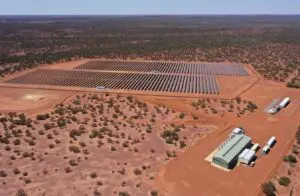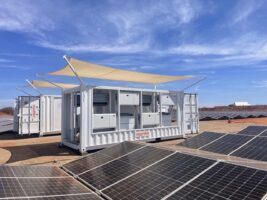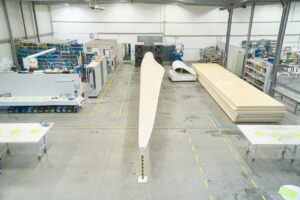An international team of researchers led by Australia’s CSIRO has achieved record-breaking efficiency for roll-to-roll printed flexible solar cells, a landmark step which could pave the way for increasingly varied ways of deploying solar.
The record-breaking results were published today in the journal Nature Communications and outline the record-breaking results of solar cells that have been printed onto thin plastic films.
Lead by CSIRO – the Commonwealth Scientific and Industrial Research Organisation, Australia’s government agency responsible for scientific research – the research demonstrates that these new printed flexible solar cells are on the cusp of commercialisation.
While printed and flexible solar cells are not themselves groundbreaking, the increasing levels of efficiency and ability to mass produce these solar cells are what make these findings newsworthy.
Though they are not entirely comparable to traditional rigid solar panels, CSIRO’s printed flexible solar cells have now been demonstrated achieving 15.5% efficiency on a small scale and 11% for a 50cm2 module – a record for fully printed solar cells.
This is also the first time that printed flexible solar cells have been produced at this scale and efficiency using fully roll-to-roll fabrication techniques – the same sort of techniques that are used to print newspapers.
As anyone with solar on their rooftop an attest, traditional silicon solar panels are heavy and rigid, and are therefore significantly limited in where they can be deployed.
Being able to mass-print solar cells onto flexible plastic films opens the way for solar to be adhered to everything from buildings to vehicles, boats, caravans, trains, clothing to wearable technology.
Flexible solar cells manufactured by CSIRO are already in outer space, having been launched earlier this month on the surface of the Optimus-1 satellite, Australia’s largest private satellite that has been built by Space Machines.
The perovskite-based solar cells (PSCs) – likely the same as the ones analysed in today’s research – are being assessed for their ability to provide power generation for space-based satellites such as Optimus-1.
“CSIRO’s printed flexible solar cells could provide a reliable, lightweight energy solution for future space operations and exploration,” said Dr Kimberley Clayfield, CSIRO space program director.
“If the space flight test reveals similar performance as we’ve shown in the lab, this technology offers significant advantages over traditional silicon-based solar.”
Using CSIRO’s printed flexible solar cells to help power Optimus-1 will also help to demonstrate the technology’s ability to withstand the extreme conditions in space as well as provide CSIRO with data on the efficiency they achieve.
“Based on our research we expect our printed flexible solar cells will stand up to the effects of cosmic electron and gamma radiation which can compromise the performance and integrity of traditional solar cells,” said Dr Anthony Chesman, CSIRO renewable energy systems group leader.
“We are also confident these cells will outperform traditional cells in cases where sunlight hits them at non-optimal angles.”










